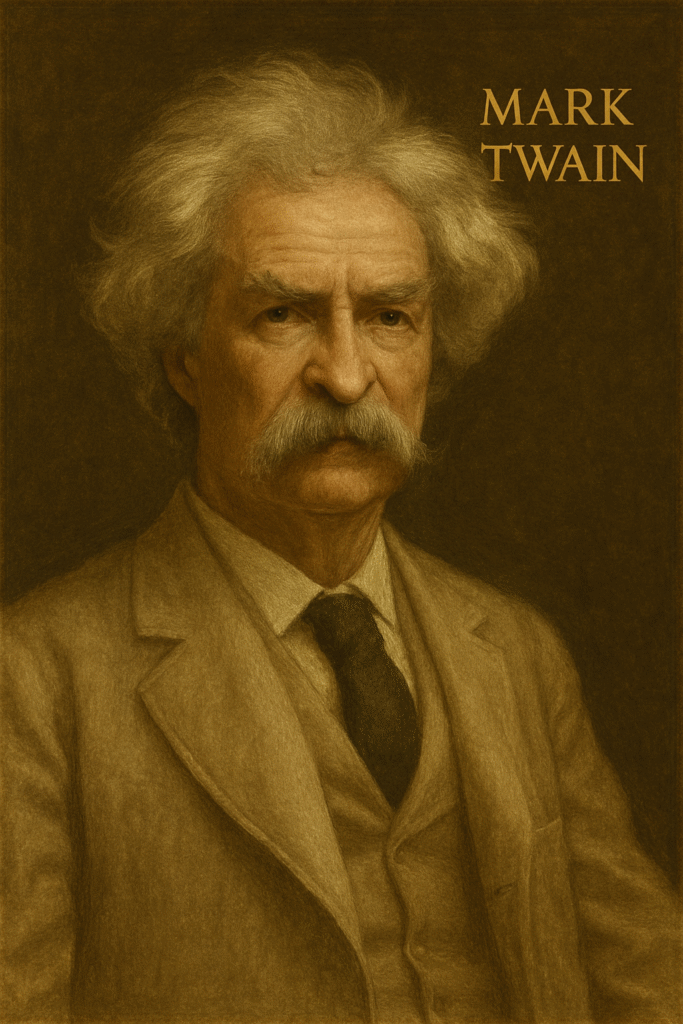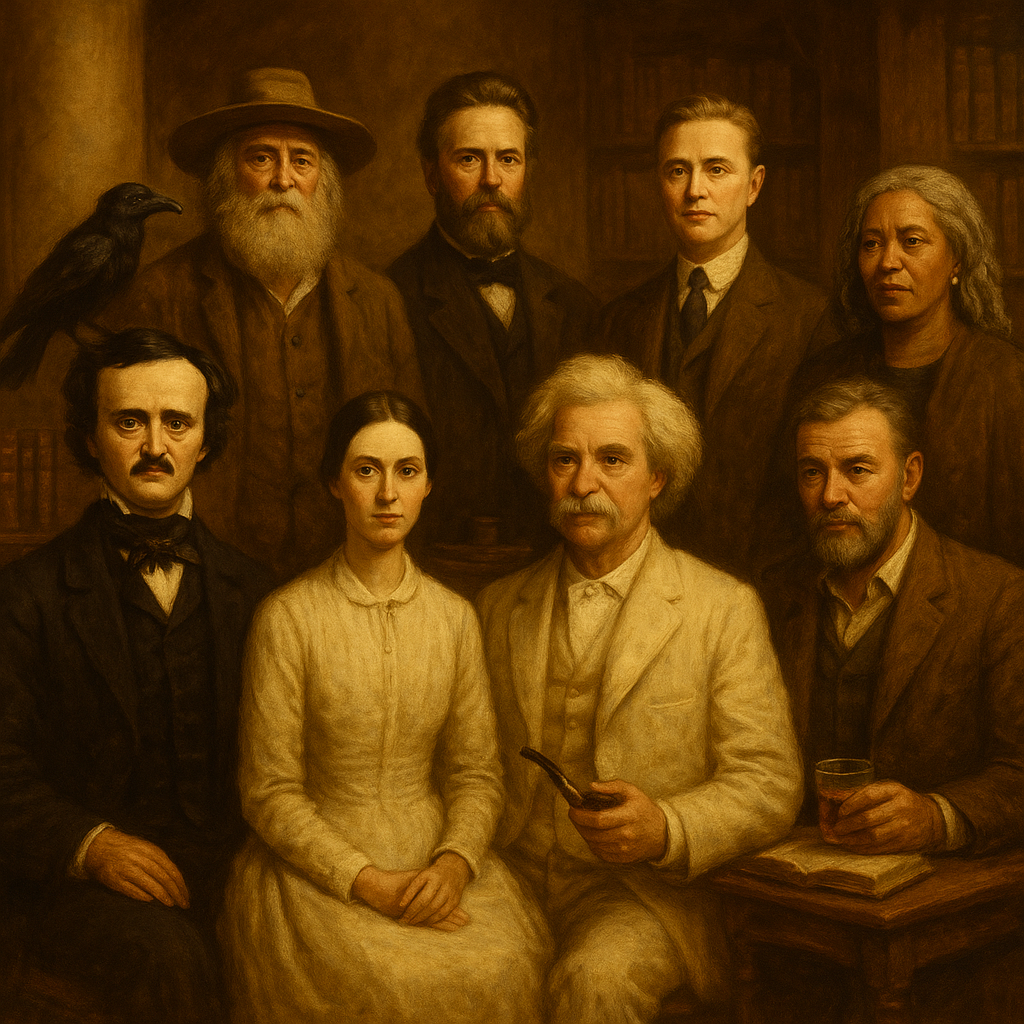Mark Twain (1835–1910): Life and Works of Mark Twain
Mark Twain was one of the most influential authors in American literature. The life and works of Mark Twain reveal his sharp wit, social insight, and unmatched storytelling. This article provides a detailed look into his life and legacy.
Early Life of Mark Twain
Samuel Langhorne Clemens, known as Mark Twain, was born on November 30, 1835, in Florida, Missouri. His family moved to Hannibal, a port town along the Mississippi River, when he was four. Hannibal would later inspire the fictional town of St. Petersburg in his novels.
His early life was filled with challenges. His father died when Samuel was just eleven. He then worked as a printer’s apprentice and later as a typesetter. During this time, he developed a love for writing and reading.
Becoming Mark Twain
In his twenties, he worked as a riverboat pilot on the Mississippi. This experience gave him deep insight into American life and the river’s symbolic power. The life and works of Mark Twain were deeply shaped by these formative years. The river appears as a central element in many of his stories.
During the Civil War, he joined a Confederate militia for a short time before heading west. He tried silver mining in Nevada, but soon turned to journalism. It was during this period that he adopted the pen name “Mark Twain,” a term used by riverboat pilots.
Rise to Fame
Twain gained national attention in 1865 with his short story “The Celebrated Jumping Frog of Calaveras County.” The story’s humor and style attracted readers across the country. He followed this with a series of travel letters and humorous pieces.
In 1876, he published The Adventures of Tom Sawyer, a novel inspired by his childhood. It was followed by Adventures of Huckleberry Finn in 1885, a book that is often called the first great American novel. These works solidified his reputation as a major literary figure.
Major Themes in Twain’s Work
The life and works of Mark Twain are full of rich themes. His writings often explore freedom, morality, and the American identity. He used humor and satire to expose hypocrisy, racism, and greed.
He was deeply aware of the social and political changes of his time. Twain’s characters are often caught between tradition and progress. He used simple language to express complex ideas. This style made his work accessible and powerful.
Realism and Social Critique
Twain is considered a pioneer of American realism. He rejected the romanticized literature of earlier writers. Instead, he focused on real people, real speech, and real problems.
In Adventures of Huckleberry Finn, Twain addressed issues like slavery, racism, and moral development. The book’s honest portrayal of American society sparked debate. Yet, its powerful critique made it a landmark in American literature.
The life and works of Mark Twain show his desire to hold a mirror to society. He believed that storytelling should reflect truth. His honesty made him both loved and controversial.

Travel Writing and Lectures
Twain was also known for his travel writing. His books The Innocents Abroad, Roughing It, and Following the Equator combined travel narrative with humor and social observation. These works offer a global view from an American perspective.
He also gave popular lectures across the United States and Europe. His sharp wit and engaging style made him a favorite speaker. The life and works of Mark Twain were deeply connected to his experiences as both a traveler and observer.
Later Years and Financial Struggles
Despite his success, Twain faced serious financial troubles. He invested in failed inventions and lost much of his fortune. To recover, he went on worldwide lecture tours.
His later years were marked by personal loss and sadness. He lost his wife and three of his four children. These events influenced his later writings, which became darker and more cynical.
Even in sorrow, Twain continued to write. His later works, like The Mysterious Stranger, explore deeper philosophical questions. They reflect a more complex view of human nature.
Legacy and Influence
The life and works of Mark Twain have left an enduring legacy. He is often called the father of American literature. His influence can be seen in writers like Ernest Hemingway and William Faulkner.
Twain’s blend of humor, honesty, and moral insight set a new standard. His voice was distinctly American. He captured the language and spirit of his time.
His home in Hartford, Connecticut, is now a museum. His books are studied around the world. Twain’s legacy lives on in classrooms, libraries, and literature.
Conclusion: A Literary Giant
Mark Twain was more than a humorist. He was a keen observer of human nature. The life and works of Mark Twain reveal a man who used laughter to expose truth.
He wrote about the joys and pains of American life. He spoke for the common people. His characters live on in the imagination of readers.
Twain once said, “The secret of getting ahead is getting started.” He started with words and created a world. His journey from the Mississippi River to global fame is a story of talent and perseverance.
His writings continue to inspire and provoke thought. Twain’s legacy proves that literature can be both entertaining and enlightening. The life and works of Mark Twain remain a cornerstone of American culture.
The Wife of Bath in Canterbury Tales: https://englishlitnotes.com/2025/05/26/wife-of-bath-in-the-canterbury-tales/
Romantic Period in American Literature: https://americanlit.englishlitnotes.com/romantic-period-american-literature/
Letter to Brother about Improving Health:
https://englishwithnaeemullahbutt.com/2025/04/26/letter-to-brother-about-improving-health/
Use of ‘Along with’: https://grammarpuzzlesolved.englishlitnotes.com/the-book-along-with-the-notebooks/
Discover more from Welcome to My Site of American Literature
Subscribe to get the latest posts sent to your email.
